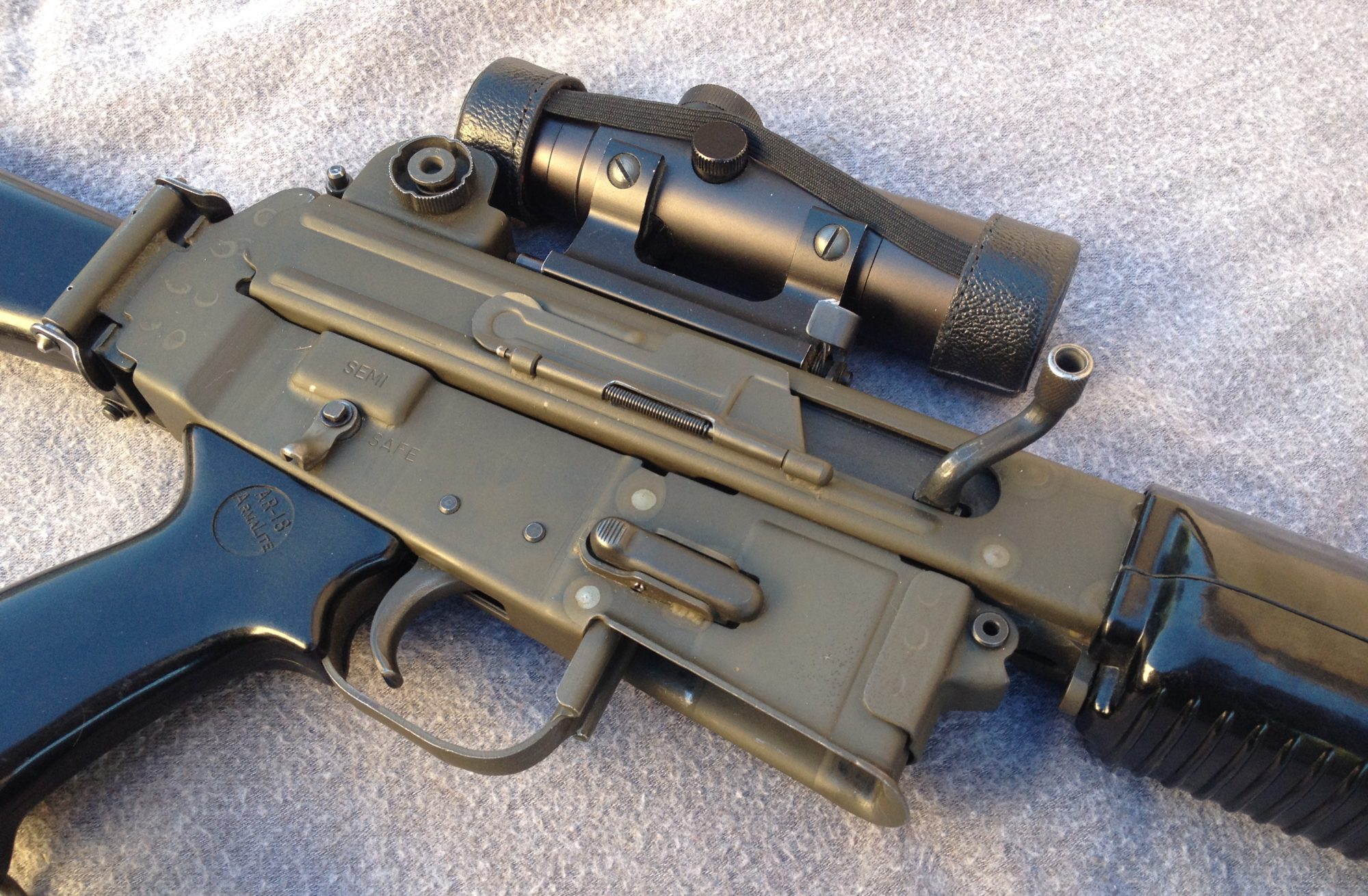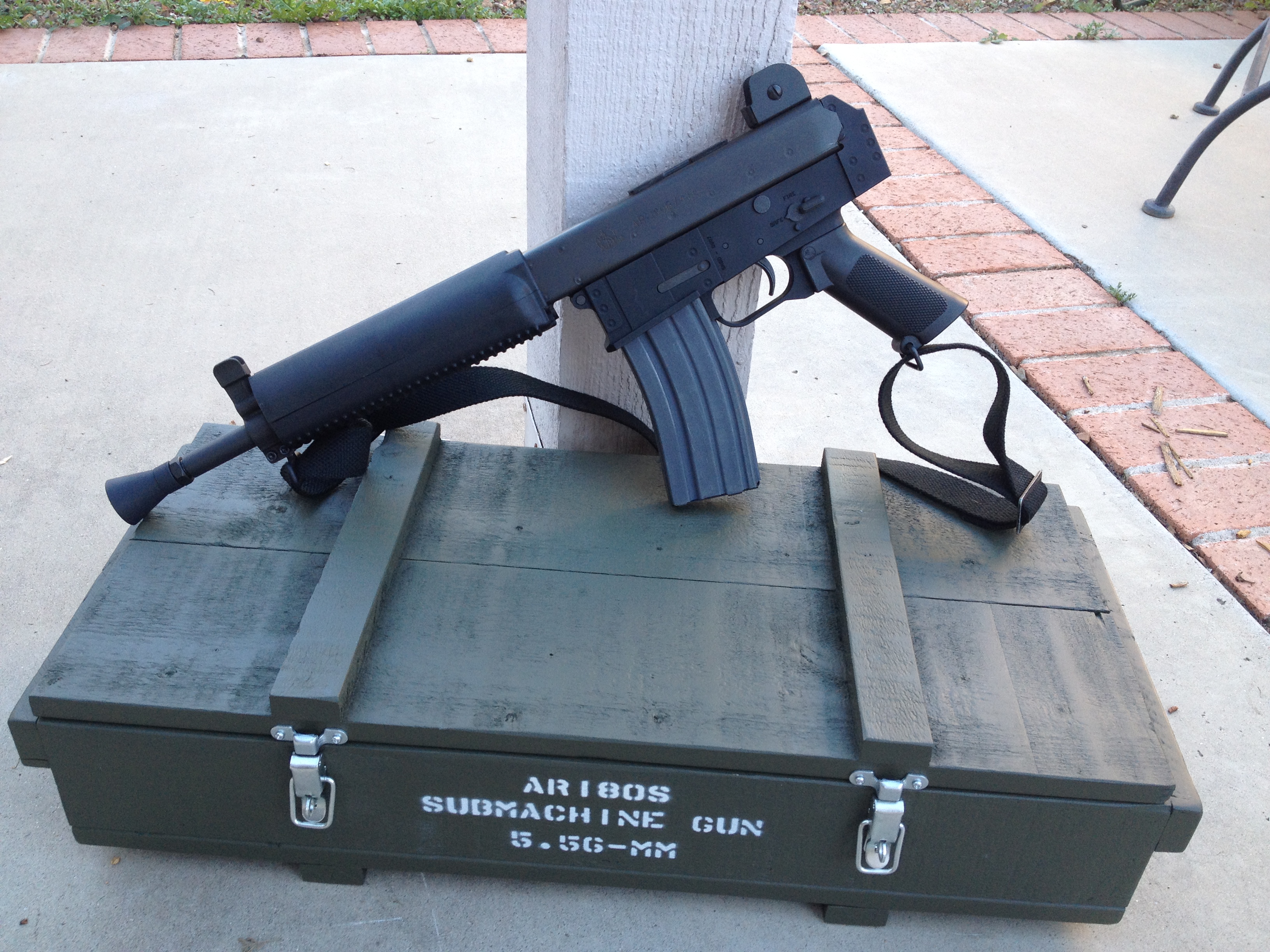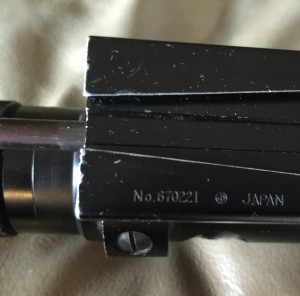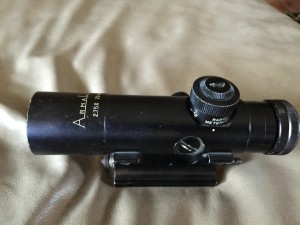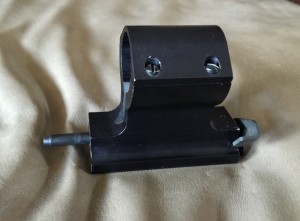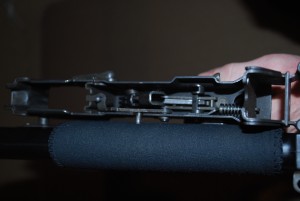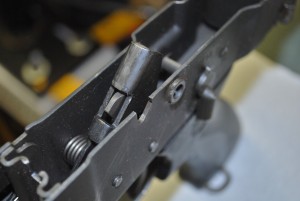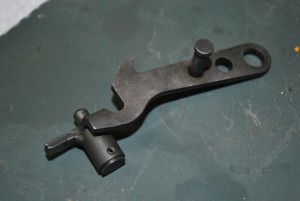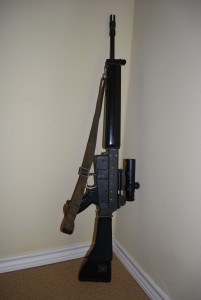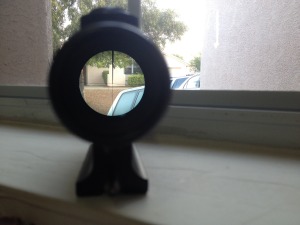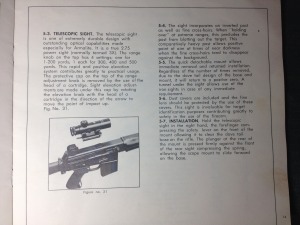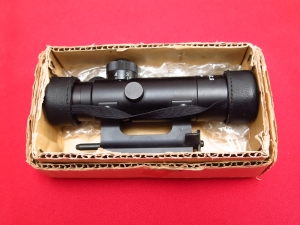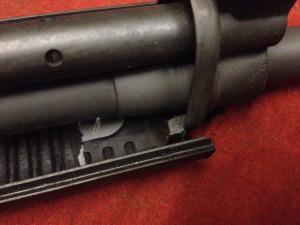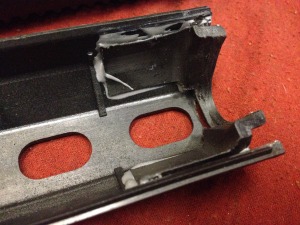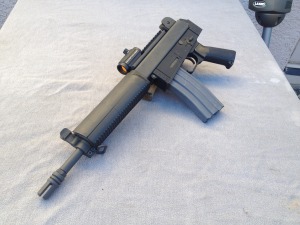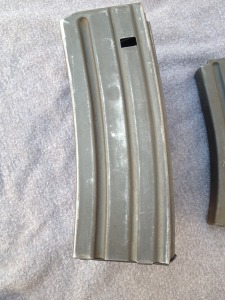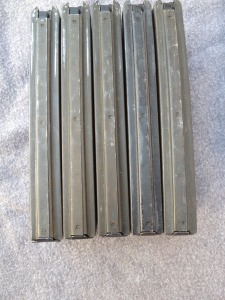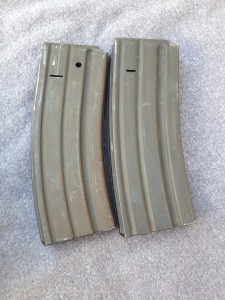Subscriber Pictures #1
Subscriber Tommy was kind enough to send me some pictures from the latest Armalite scope he recently picked up.
You can see it is is an early inverted post scope marked with the serial number 670221.
He also showed us the scope mount that was on his early Costa Mesa when he got it from his dad. It is unmarked just like the one I own. I don’t believe these had serials or any other markings.
I also must apologize to subscriber Jeff as he sent me some pictures some time back and I never posted them.
He has a Costa Mesa gun with a very interesting feature, a bolt hold open that you can actuate from the outside of the gun with the magazine still in the gun.
It is unclear if this was done at the factory or after the fact by a gunsmith. It is a very professional job nonetheless.
If these guns were not so collectable I think it would be a very cool modification to perform as the only way to activate the bolt hold open is to reach in through the magazine well.
Here are a centerfold shot of Jeff’s Costa Mesa.
Thanks to Tommy and Jeff for their pictures and please contact me if you have any you would like to contribute.
First Generation AR-180 Scopes
The first generation AR-180 scopes are easy to identify if you know how.
They are marked in meters.
The reticle is of the inverted post style.
The practical uses of this style reticle is mentioned in the manual.
To quote from the manual. “The sight incorporates an inverted post as well as fine cross-hairs. When “holding over” at extreme ranges, this precludes the post from blotting out the target.”
The final distinguishing mark that this scope features is a serial number on the bottom of the base. These will all start with 67 followed by four digits.
My good friend and AR-180 mentor, Rich, has collected all the scope serial numbers he has come across over the years and has found none that are higher than 671000. He has further deduced that these were originally produced for the first 1000 Howa rifles.
Armalite never wanted to go into production and make guns as much as they wanted to design them and then license the rights to others to actually produce.
The fact that they had Howa Machinery produce the rifle is documented in the January 31, 1966 issue of U.S. News and World Report. One small paragraph under the heading “Rifles for Asia” reads.
“Armalite, Inc. the Costa Mesa, Calif., firm that took over the former Fairchild gun division, has developed a new combat rifle, the AR18. This model is to be produced by Japan’s Howa Machinery, Ltd., under a provisional agreement. It would be the first mass production of this rifle, with the Japanese expecting to export some units to such Southeast Asia customers as Thailand and the Philippines.”
Original article found here
After Howa produced the first 1000 rifles but before they could ship, Japan became neutral and would not ship any guns to nations that were in active conflicts.
“Adopted in 1967, the three principles originally prohibited arms sales to Communist nations, countries under United Nations sanctions and countries in armed conflict, but it eventually grew into a blanket ban on all weapons exports.”
From NY Times article.
Early Howa AR-180’s are known to have been converted from AR-18’s so this is the series of events as I have come to understand them.
Howa produced 1000 AR-18 rifles in 1967. They were complete with serial numbered scopes and flash hiders. The Japanese government changed policy and they were not allowed to export them. The Costa Mesa plant was forced to ramp up production and in order to offer scopes as add on accessories, they imported the scopes from Howa as these were not under any sanctions. These scopes were offered up, in plain cardboard boxes, to any who ordered them with no thought given to matching the serial numbers.
Picture found via Google Image Search
In conclusion, this makes for a pretty firm number of these early scopes not counting losses over the years. Less than 1000. Identifying and distinguishing them from the later scopes is pretty straight forward, marked in meters, inverted post reticle, and a serial number starting in 67.
Good hunting and please let me know if you have any pictures of original scope boxes you would like to share.
Please note I have manually added a few email addresses to my subscriber list, let me know if this is a problem and I will gladly remove them.
AR-180B Shorty Project Pt. III
The next part that had to made were the hand guards. I first mocked them up to find the approximate length then cut them off with my bandsaw. I left them a little long and figured I could trim them if I had to.
I then trimmed a small piece of the front end of the cut off part and fitted them into the hand guard. This will allow me to use the existing end cap.
Here you can see that I didn’t get things exactly right as there is a small gap at the front of the hand guards. They will work for function testing but I intend to build a set of new end caps that encapsulate the entire hand guard.
Here she is ready to head to the range and dial in the gas port size.
Featuring a Stormwerkz mount and Primary Arms Micro Red Dot.
I would also like to ask if everyone could help me test out the site by leaving comments so I can see if it is working.
Identifying Costa Mesa 30 Round Magazines
In the early days of production and sales in Costa Mesa, Armalite offered their own 30 round steel magazines.
These are often misidentified or overlooked because they have no markings at all.
You will notice that the bases plate shown in the picture below have no markings and feature a hole on one end. These are the ones you are looking for. (The top magazine has the incorrect base plate)
Unlike the Sterling magazines, these have no hole on the side of the magazine.
Right side.
Left side.
They also feature a unique spot weld design that I have seen on no other magazines. Three equally spaced spot welds are more prominent than the rest.
You will also not that these magazines are designed with a full curve and not the partial curve of the Sterling or M16 magazines.
Good luck with your hunt for these highly desirable magazines.
Please subscribe so you never miss an article and comment. I rely on your feedback to drive the direction of these articles.
